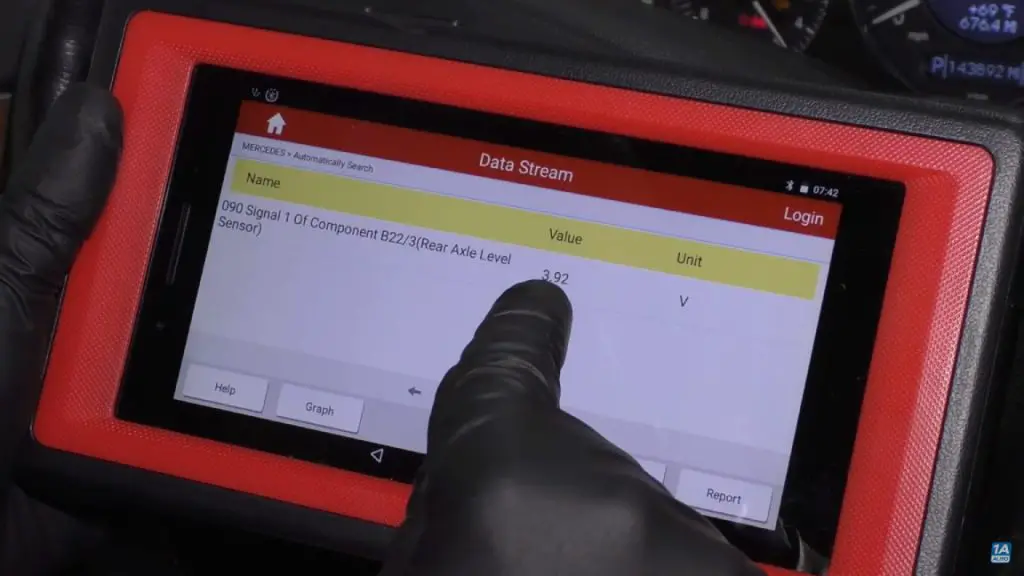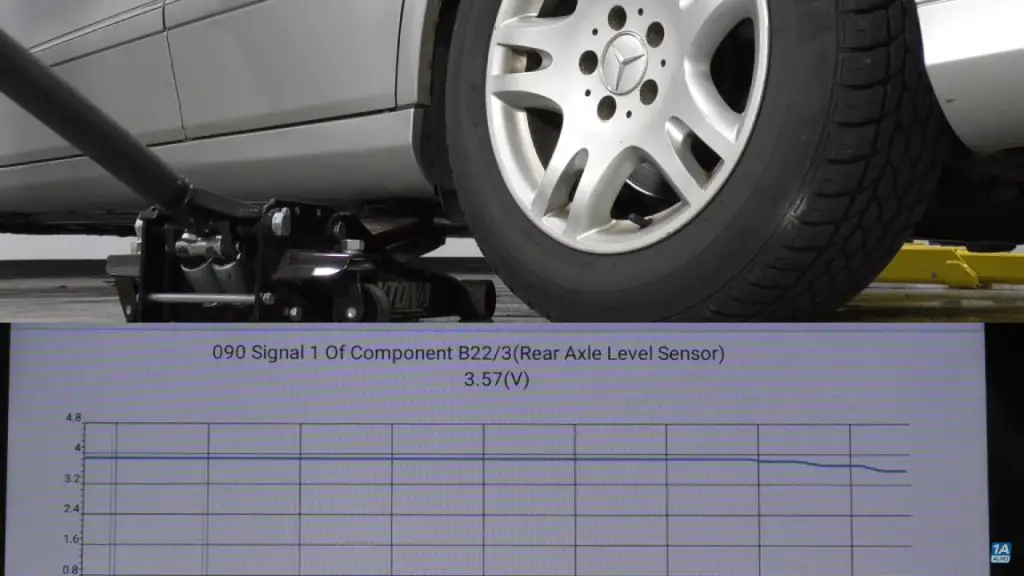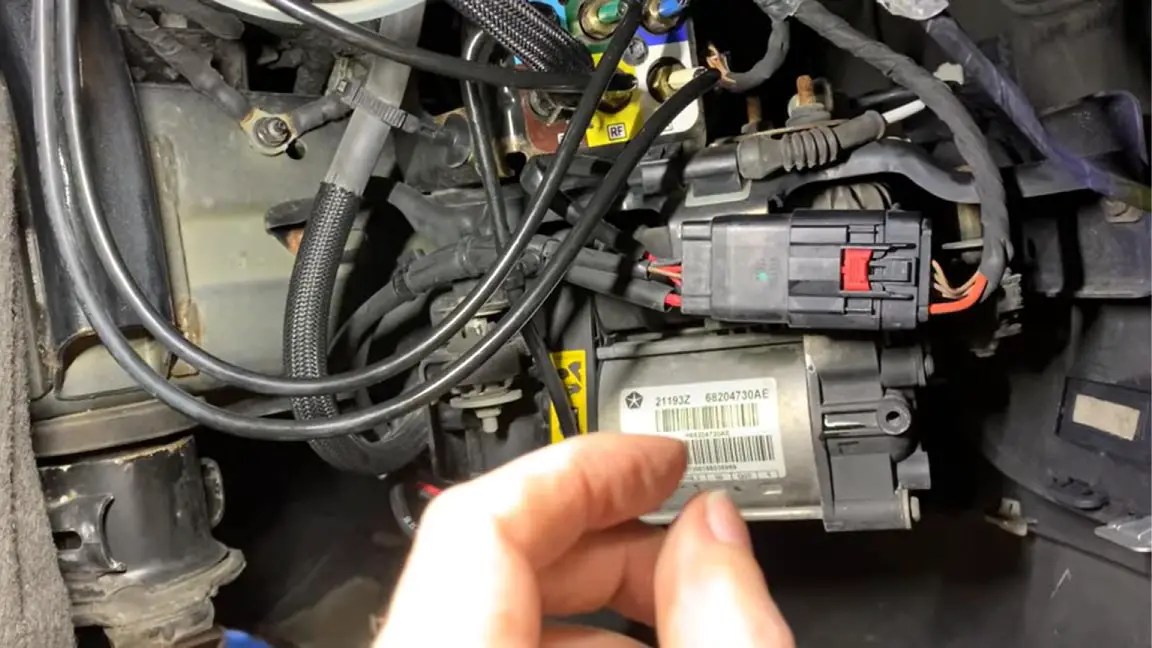The air suspension system in the Jeep Grand Cherokee offers a blend of comfort and adaptability—a guide on resetting the air suspension in your Jeep Grand Cherokee. Whether you’ve recently undergone significant repairs or encountered warning light concerns, understanding the process of resetting your air suspension is essential for ensuring peak performance and a comfortable driving experience.
In this blog post, I will guide you on how to Jeep Grand Cherokee Air suspension reset. And how to reset the 2011, 2012, 2013, 2014, and 2015 Jeep Grand Cherokee Air Suspension. ensuring your vehicle maintains its smooth ride and handling characteristics.
So, Let’s get started.
What Is Air Suspension In Jeep Grand Cherokee System
The air suspension system in your Jeep Grand Cherokee is a technological marvel designed to provide a customizable and comfortable driving experience.
It uses air springs and electronic controls to adjust the vehicle’s ride height based on driving conditions and user preferences. This system is particularly beneficial for off-road adventures and maintaining a smooth ride on various terrains.
Reasons For Resetting The Air Suspension
There are several scenarios where resetting the air suspension in your Jeep Grand Cherokee might be necessary:
- Battery Replacement: Disconnecting or replacing the battery can sometimes lead to the suspension system losing its calibration settings.
- Suspension Component Replacement: If you’ve had any repairs or replacements done to the suspension components, a reset might be required to ensure optimal performance.
- Height Calibration Issues: If you notice that the vehicle’s ride height isn’t adjusting properly or the suspension feels uneven, a reset can recalibrate the system.
- Diagnostic Purposes: Mechanics often perform a reset when diagnosing issues with the air suspension system.
9 Step to Jeep Grand Cherokee Air Suspension Reset

Resetting the air suspension system in your Jeep Grand Cherokee is a task that can help restore optimal performance and ride comfort. While the basic steps provided by your competitor are on the right track, there are some important nuances to consider. Here’s a more detailed and accurate guide:
1. Safety First: Before starting any work on your vehicle, ensure your engine is turned off, and engage the parking brake to prevent any accidental movement.
2. Disconnect the Battery: Begin by disconnecting the positive (red) battery cable. This step is vital to avoid any electrical accidents throughout the reset procedure.
3. Locate the Air Suspension Fuses: The air suspension fuses can usually be found in the fuse box, which is typically located under the hood of your Jeep Grand Cherokee. Consult your vehicle’s manual or the fuse box cover for specific fuse locations related to the air suspension system.
4. Remove the Air Suspension Fuses: Carefully remove the fuses related to the air suspension system. Depending on your Jeep’s model and configuration, there may be multiple fuses to remove. Be sure to handle them gently to avoid damage.
5. Wait and Reconnect: After removing the fuses, wait for at least a couple of minutes to ensure any residual electrical charge dissipates. This brief pause is essential for a full system reset.
6. Reconnect the Fuses: Once you’ve waited, carefully reinsert the air suspension fuses back into their respective slots in the fuse box. Ensure they are securely seated.
7. Reconnect the Battery: With the fuses in place, reattach the positive battery cable to its terminal. Ensure it’s tightened securely.
8. Start the Engine: Start your Jeep Grand Cherokee’s engine and let it run for approximately 8 minutes. During this time, the air suspension system will recalibrate and reset itself. It’s essential to allow this full duration for the reset to be completed successfully.
9. Test the Suspension: After the reset process is finished, take your vehicle for a short drive to confirm that the air suspension is functioning correctly. Be attentive to any unusual sounds or concerns with how the vehicle handles. Do not forget to reset the Power Liftgate while doing this. If you want to do this then you can see this article.
These tips use this model 2011, 2012, 2013, 2014, and 2015 Jeep Grand Cherokee Air suspension resets. Use these tips and it will work. You can confidently reset the air suspension system in your Jeep Grand Cherokee. This process guarantees that the system is recalibrated after repairs or issues, leading to a smoother and safer driving experience. Always prioritize safety and precision when performing such procedures.
5 Common Air Suspension Reset Problems
1. Unresponsive Controls
Issue: The air suspension controls do not respond when attempting the reset process.
Solution:
- Check if the ignition is turned to the “ON” position without starting the engine.
- Ensure that all doors are closed and the driver’s seat is occupied.
- Confirm that you are following the correct button sequence for your vehicle’s make and model.
2. No Confirmation Chime Or Notification
Issue: After performing the reset process, there is no audible chime or dashboard notification to confirm the reset.
Solution:
- Wait for a few seconds after releasing the buttons to allow the system to reset.
- Check your vehicle’s manual to see if it provides any visual cues to indicate a successful reset.
3. System Still Not Resetting
Issue: Despite following the reset procedure, the air suspension system remains unchanged.
Solution:
- Ensure you are accurately following each step of the reset process.
- Consult your vehicle’s manual to see if there are any specific requirements or conditions that must be met before performing the reset.
4. Repeated Reset Failures
Issue: You’ve attempted the reset multiple times, but the system still does not respond.
Solution:
- If the system continues to fail, consider disconnecting the vehicle’s battery for a few minutes and then attempting the reset again.
- If the problem persists, it’s recommended to seek professional assistance from a certified mechanic or dealership.
5. Suspension Remains in Incorrect Height
Issue: After performing the reset, the air suspension does not adjust to the correct ride height.
Solution:
- Double-check that the vehicle is on a level surface when performing the reset.
- Verify that there are no physical obstructions preventing the suspension from adjusting.
How Do I Reset The Air Suspension In My Jeep Grand Cherokee From 2011 To 2015?

Follow these steps:
- Start the vehicle’s engine.
- Locate the suspension control module. It’s often found beneath the rear seats or in the trunk area.
- Turn off the air suspension switch or button.
- Wait for about 3 minutes to allow the system to fully depressurize.
- Turn the air suspension switch or button back on.
- Wait for the system to initialize. This might take a few minutes.
- Once initialization is complete, you may hear the air compressor engage to adjust the ride height.
8 Easy Ways To Fix Jeep Grand Cherokee Air Suspension Problems
Here are 8 Jeep Grand Cherokee suspension problems. I will provide problem and solution tips for you.
- Compressor Failure
- Worn Struts and Shocks
- Damaged Air Springs
- Electronic Control Unit or Height Sensor Failure
- Use OEM and Aftermarket Air Suspension Replacements
- Leaking Quadra-Lift Suspension
- Convert Your Suspension to Traditional Coil Springs.
- Excessive Body Roll and Handling Issues
Solution
Facing suspension issues in your Jeep Grand Cherokee, such as compressor failure, worn struts and shocks, damaged air springs, leaking Quadra-Lift suspension, or electronic control unit (ECU) and height sensor failure, can be both concerning and detrimental to your vehicle’s performance and comfort. However, there are effective solutions available for these problems and restore your Jeep’s optimal suspension functionality.
1. Compressor Failure
In the case of suspension compressor failure, it’s essential to start by inspecting the compressor’s electrical connections and fuses to rule out any potential electrical issues. If those components are in good condition, it’s advisable to have the compressor inspected by a professional technician.
Should the compressor be found faulty, replacement might be necessary. Regular maintenance practices, including periodic checks of the compressor’s operation and keeping it clean, can aid in preventing future failures.
2. Worn Struts And Shocks
Worn struts and shocks can substantially impact your Jeep’s ride quality and handling. To address this, consider replacing these components when signs of wear become evident. Refer to your vehicle’s manual for recommended replacement intervals, and contemplate upgrading to high-quality aftermarket struts and shocks for enhanced performance.
Consistently examining these components for symptoms such as leaks, excessive bouncing, or uneven tire wear can facilitate early issue identification and timely resolution.
3. Damaged Air Springs
Damaged air springs can lead to an uneven ride height and compromised suspension performance. To tackle this concern, it’s recommended to promptly seek a professional mechanic’s assessment of your suspension system.
Depending on the extent of the damage, replacement of the affected air springs may be required. Preventive measures, such as adhering to recommended vehicle load capacities and cautious driving over rough terrains, can help minimize the risk of air spring damage.
4. Electronic Control Unit Or Height Sensor Failure
Electronic control unit or height sensor failure, which can disrupt your suspension’s ability to maintain stability and proper ride height, consulting a certified technician is essential.
A diagnostic scan will help identify the root cause of the issue, allowing for precise repairs. Depending on the diagnosis, addressing the faulty electronic control unit or height sensor promptly will ensure the integrity of your suspension system.
5. Use OEM And Aftermarket Air Suspension Replacements
OEM and aftermarket air suspension replacements offer an array of choices that can often provide enhanced performance and customization options.
When opting for aftermarket replacements, look for reputable brands known for their quality and compatibility with your Jeep Grand Cherokee’s model and year.
6. Leaking Quadra-Lift Suspension
If you’re confronted with a leaking Quadra-Lift suspension, it’s imperative to act swiftly. Leaks can result in inconsistent ride height adjustments and reduced suspension effectiveness. To resolve this, your first step should be identifying the leak’s origin, which could stem from seals, hoses, or other components.
After pinpointing the source, proceed with replacing the compromised part and ensuring the entire system is well-sealed. Regular maintenance that includes leak checks and fluid level maintenance will contribute to preventing future leakage issues.
7. Convert Your Suspension To Traditional Coil Springs.
This conversion involves removing the air suspension components and replacing them with coil springs, along with the necessary supporting components such as shock absorbers and control arms.
The advantages of this conversion include potentially lower maintenance costs and increased longevity, as coil springs generally have fewer moving parts compared to air suspension systems. This solution is favored by some drivers for its reliability and straightforward maintenance.
8. Excessive Body Roll And Handling Issues
If you notice your Jeep Grand Cherokee exhibiting excessive body roll during turns or experiencing compromised handling and stability, it could be due to worn sway bar links or bushings. These components play a critical role in minimizing body sway and maintaining proper vehicle control.
Frequently Asked Question
Can I Reset The Air Suspension Myself, Or Should I Consult A Professional?
While it’s possible to reset the air suspension yourself following proper instructions, if you’re unsure or uncomfortable with the process, it’s recommended to consult a professional mechanic or authorized dealership.
What Tools Or Equipment Do I Need To Reset The Air Suspension?
Generally, you’ll need basic tools such as wrenches, socket sets, and a diagnostic tool if available. Refer to your vehicle’s manual for specific requirements based on your Jeep Grand Cherokee’s model and year.
Is A Battery Disconnect Necessary During The Reset Process?
Yes, disconnecting the battery terminals is a crucial step. This prevents electrical mishaps and ensures a safe reset procedure.
How Often Should I Reset The Air Suspension?
You should only reset the air suspension when necessary, such as after repairs or warning light issues. Over-resetting can disrupt the system’s proper functioning.
Can I Reset The Air Suspension To Fix Ride Quality Issues?
While a reset can recalibrate the system, it may not fix all ride quality issues. If you experience ongoing ride problems, consult a professional to identify and address the root cause.
Final Word
This whole article is about how to Jeep Grand Cherokee air suspension reset. And covered why you reseat an air-suspension Jeep Grand Cherokee. Besides, Covered how to reset the 2011, 2012, 2013, 2014, and 2015 Jeep Grand Cherokee Air Suspension. You can use the above 2 tips, if not one, use the second tips.
You try to follow and maintain my step-by-step guide. If you can’t follow the guide. My advice is to go to someone who can handle this or go to an expert. Don’t risk your life. After that, if you do the work then keep playing very careful execution of battery disconnection, fuse manipulation, and system verification, and the air suspension system regains its equilibrium.
Nonetheless, it’s essential to approach the reset process with precision and care. Consulting your Jeep Grand Cherokee’s manual and, when in doubt, reaching out to a professional mechanic ensures a reliable outcome. In the ever-evolving landscape of automotive technology, proper maintenance practices, such as air suspension resets, serve as the bridge between innovation and reliability.

We have followed instructions, still not resetting, all ligght s on console blinking. Air tank full. Air pump was bad ( rattled when shook.
Pulled battery and fuses waited 8 minutes,_have done three tines. Lights blinking no movement or compressor kicking in.